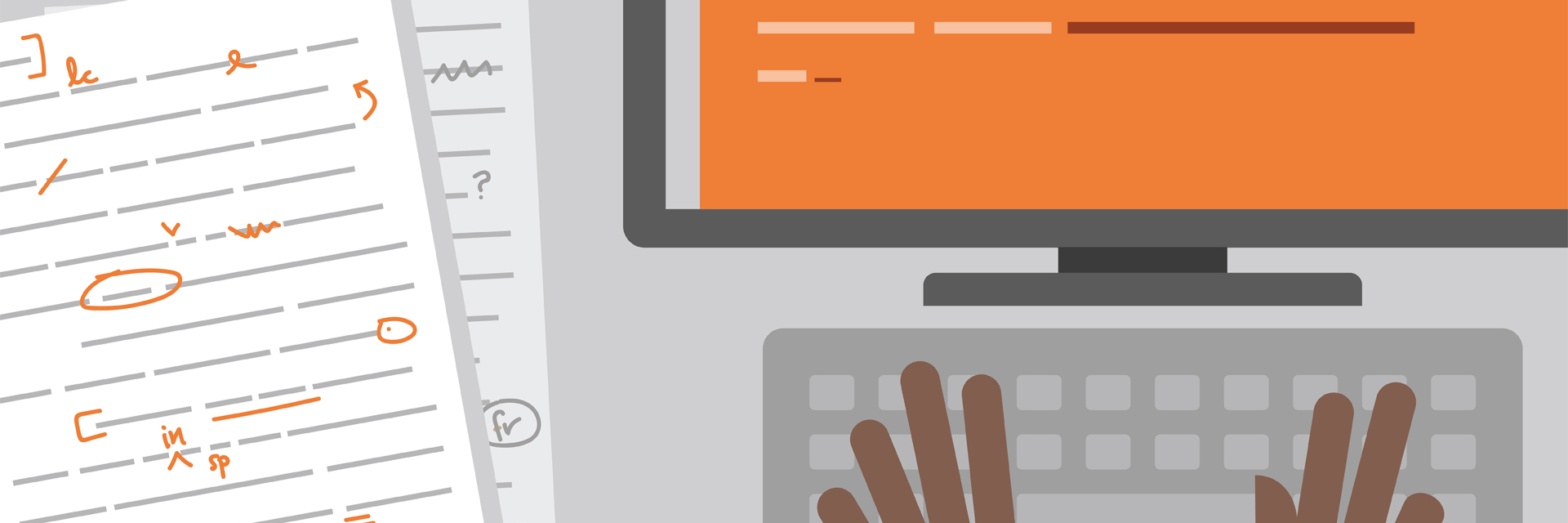Marie Walker's blog : What are the different types of editing? —Differentiating between Editing, Copy-editing, and Proofreading.

You might have noticed editing, copy-editing, and proofreading terms being used interchangeably. Have you questioned what the difference between all three of them is? Are they all the same? After all, they are employed to make necessary changes in the text —blog, article, report, book, or any other written piece of communication.
Well, to begin with, there is a significant difference between all three of them. It’s an important question to ask before you decide to publish your book or a story. In this blog post, let’s explore their distinctive attributes and discover for what purpose they are used; likewise, at what writing stage they are employed by experts.
Development Editing, aka Conceptual Editing:
The
first on our list is Editing. To tell you the truth, there are different types
of text editing as well. The developmental stage of your story or book will
decide which kind of editing it requires. We are leaving this elaboration for
the next post. We will focus on the basic editing for now, and that is called
Development editing. It is also known as Conceptual Editing. As suggestive by
its name DE is examining the text or the manuscript from the conceptual based
perspective. It looks at the text from the bigger picture. What does the bigger
picture mean? It means that the editor ensures content alignment with the
plotline, if the text makes sense, or does the characters are organized correctly.
The author, Mary-Theresa Hussey, explains that the development editing process requires you to answer the plotline, characters’ motivations, behavior, attitude, and theme with correct consistency and accuracy. Although this DE process is time-consuming and requires substantial and thoughtful concept checking, it pays off significantly. While Ericka McIntyre, the professional editor, maintains that developmental editing is the Organization of the story appropriately, ensuring that the plot lines work and all the characters are placed where they belong.
Copy-editing— looking at the micro-level
After the editing is completed, copy-editing takes place. In this phase, the copy-editor fixes the copy of the manuscript. Copy-editing seeks to make stylistic changes to improve the quality of the text. How does a copy-editor do that? He holds a microscope in hand and searches for all the grammar, spelling, coherence, punctuation, and text constancy. The later part was a joke. Of course, he does not do that literally. Well, it may be in some exceptional cases. The type of elements a copy-editor considers is solely based on the micro-level.
He also ensures that no syntax errors occur in the copy. Likewise, he would look for any unintentional mistakes of Tenses or change of narrative voice. He also searched for descriptive inconsistencies like the place, characters, and setting descriptions. All these changes at a micro-level help eradicate all the possible confusion, making the copy look refined and polished manuscript.
This is fine-tuning of your development edited manuscript. In her article ‘’Why America Needs Copy Editors,’’ Merrill Perlman highlights the significance of copy-editing as ‘’ A copy editor’s work is mostly invisible until she misses something, in which case she takes the blame. But most important is that a copy editor stands in for the reader, gingerly reshaping, clarifying and correcting things before the reader can see them and post an excoriating comment.’’
Proofreading — the final design:
After the macro and micro-level issues and problems are resolved comes the proofreading stage. This third stage and the final phase of editing comprise absolute magic. Isn’t it the same and editing? It is often used with editing, but the major difference between both is that proofreading takes place after the book is ready to be designed. However, to quote Gerard M-F Hill, ‘’Copy-editing and proofreading are both editings, which is wrestling with words; but proofreading is like wrestling in a broom cupboard.’’
In
this phase, the text of the manuscript is checked for the style and outlook of
the work, including the layout design, art issues, graphics, looming typing
errors, breakage in the text lines, and possible mistakes escaped the sharp
eyes of the copy-editor. Remember, the more the manuscript is read and revised,
the better. After this last step, a manuscript goes to the printer or the
publisher who makes it ready to be sold.
Wrap Up:
All three of them are essential for your manuscript. Maintaining these processes will help you hone your prose, poetry, or written communication piece efficiently.
Author Bio:
Marie is a Literature graduate and an avid reader. She writes at Ghostwriting services platform to provide insightful content for her readers and learners alike. She does not like referring to herself in the third person.
In:- Expert

